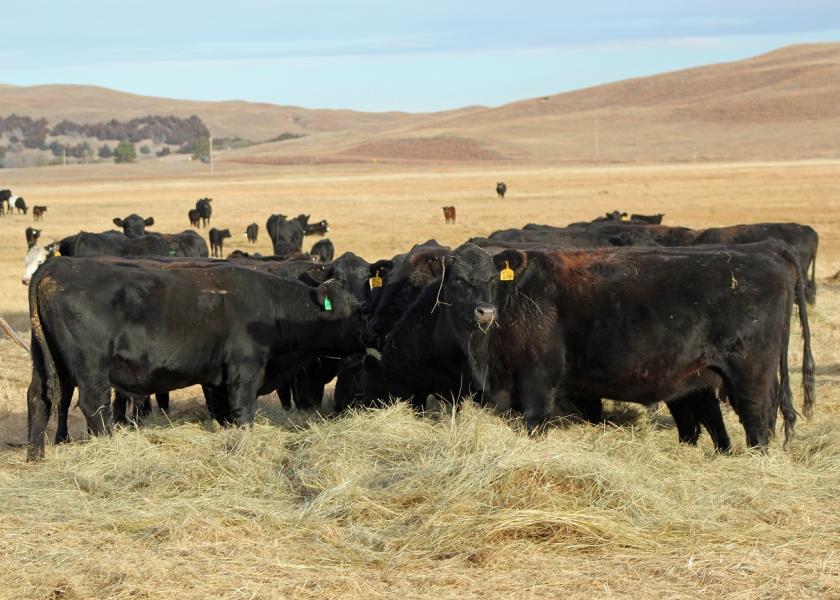The Value of Hay as Fertilizer

This time of year, many producers are feeding cows hay. Have you ever stopped to think about what the dollar value of the nutrients in the hay are worth as fertilizer once they have been processed by the cow?
Mature cows should excrete 100% of the nutrients they consume in terms of nitrogen, phosphorus and potassium.
For example, if 100 cows are being fed 30 lbs. per head per day of 17% protein alfalfa hay, that is .03% phosphorus and 2.4% potassium on an as fed basis.
So, what is the value of the nutrients available to the pasture or field where the manure is being deposited?
3000 lbs of alfalfa hay X .17 crude protein = 510 lbs of protein. Nitrogen X 6.25 = crude protein. By taking 510 lbs of crude protein and dividing by 6.25 = 81.6 pounds of nitrogen in the fed hay. Only about 35% of the nitrogen in manure and urine is available to be used. The balance is lost to volatilization as ammonia.
Using 81.6 pounds of nitrogen X .35 = 28.6 pounds of nitrogen available to be used by growing plants from the fed alfalfa hay.
The availability for phosphorus and potassium in manure and urine from feed consumed is 100%.
To find the value of phosphorus and potassium in the fed alfalfa take 3000 X .003 = 9 of phosphorus and 3000 x .024 = 72 lbs. of potassium.
In one ton of alfalfa hay, there are approximately 19 lbs. of nitrogen, 6 lbs. of phosphorus and 48 lbs. of potassium that are applied to the ground in excreted manure where the hay is fed. The fertilizer nutrient value of these minerals at $0.60/lb. of N ($11.40), $0.65/lb of P ($3.90) and $0.40/lb. of K ($19.20) would in total equal $34.50 per ton. This value doesn’t include micronutrients and the organic matter in manure and wasted hay.
It is common to see weed problems develop on rangeland that cattle are fed on during the winter months. The nutrients from the hay are often concentrated in feed areas and the availability of nitrogen, in particular, in rangeland situations encourages weed growth.
If hay is being fed, is there an opportunity to feed cattle on ground where the nutrients can be utilized for growing tame perennial or annual forages that would respond to the fertilizer?
Nutrients in hay have value. Finding ways to effectively utilize and recycle nutrients is economically beneficial. Strategically thinking about how to capture the value of nutrients in harvested forage is one way to reduce fertilizer prices for growing crops.
For more information on calculating the nutrient value of harvested feeds, visit this University of Missouri Extension article titled "Calculating Fertilizer Value of Supplemental Feed for Cattle on Pasture."







